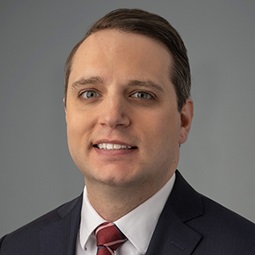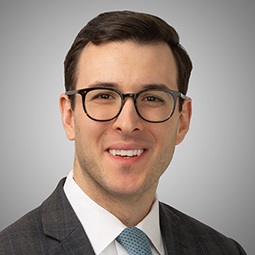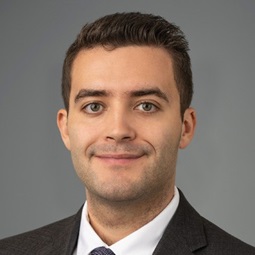Contributed by Abigail Lerner
It may be only natural to assume that long after a bankruptcy court has confirmed a chapter 11 plan and the debtor’s case has closed, a bankruptcy judge would no longer be called upon to decide disputes among parties involved in the now closed case. Somehow, though, parties seem to have a hard time after confirmation of a plan wrenching themselves away from the convenience of having the bankruptcy court at the ready to preside over their disputes. As recent cases demonstrate, it may be even harder for parties associated with asbestos debtor cases because they typically have spent so much more time getting accustomed to having the bankruptcy court act as referee over disputes. In a string of recent cases, asbestos trusts and the insurance companies with which the trusts are fighting over insurance coverage disputes have looked to the bankruptcy court to settle their post-confirmation discovery disputes. In each instance, the parties’ efforts to have the court resolve these issues have failed because the court ruled it lacked subject matter jurisdiction to hear the disputes.
In ACandS, Inc. v. Hartford Accident Indemnity Co., the ACandS asbestos trust asked the Bankruptcy Court to enjoin insurance companies with which it was engaged in coverage litigation in other courts from seeking or obtaining certain discovery. Because the Trust Distribution Procedures (“TDP”) adopted in connection with the ACandS plan purported to restrict disclosure of asbestos claimants’ submissions to the trust to instances where the claim holder consented to the disclosure or in response to a valid subpoena issued by the Bankruptcy Court, a Delaware State Court, or the Delaware District Court, the ACandS trust argued that it was not required to comply with subpoenas issued by other courts, even though certain of those courts were the courts in which the coverage litigation was pending.
Although the ACandS trust argued that the Bankruptcy Court had subject matter jurisdiction to consider the post-confirmation discovery dispute because it involved the interpretation of an exhibit to the plan, the TDP, the Bankruptcy Court did not find the trust’s arguments persuasive. First, the Bankruptcy Court rejected the notion that it had “arising in” jurisdiction to hear the dispute. The court reasoned that the nature of the instant proceeding – a discovery dispute – was not one that could only arise in the context of a chapter 11 case, and, therefore, “arising in” jurisdiction did not exist.
Next, the Bankruptcy Court considered whether the need to interpret the TDP to resolve the dispute created a close enough nexus to ACandS’s underlying bankruptcy case sufficient to create “related to” jurisdiction before the court. The court began its analysis with Pacor, Inc. v. Higgins, where the Third Circuit held that bankruptcy courts have jurisdiction over a proceeding if “the outcome of that proceeding could conceivably have any effect on the estate being administered in bankruptcy.” Although the Bankruptcy Court noted that, technically, because a debtor ceases to exist upon confirmation there could never be jurisdiction over post-confirmation disputes, the court remarked that it would be impractical to apply the rule so rigidly. Here, the Bankruptcy Court concluded that the instant dispute had no effect on the reorganized debtor and was entirely collateral to the underlying bankruptcy case. Further, the court noted that any effect the resolution of the dispute would have on ACandS’s asbestos trust would be merely speculative. For these reasons, the Bankruptcy Court ruled that a close nexus to the bankruptcy case necessary for “related to” jurisdiction did not exist.
In weighing the factors that militated against subject matter jurisdiction, the Bankruptcy Court found that the resolution of the dispute would turn on the interpretation of general contract law rather than bankruptcy law, and, therefore, the courts where the underlying dispute was pending could easily adjudicate the matter. Additionally, that ACandS’s plan documents would have to be interpreted to resolve the dispute was not sufficient to create a close nexus between the dispute and the bankruptcy case. Further, the Bankruptcy Court ruled that retention of jurisdiction provisions contained in plans do not, by themselves, confer subject matter jurisdiction. Finally, even if the Bankruptcy Court determined it had subject matter jurisdiction, the court noted that it would be required to abstain pursuant to 28 U.S.C. §1334(c)(1) because the issue before it was pending and could be timely adjudicated in another court.
The ACandS case is not the only time this year the Bankruptcy Court was confronted with questions regarding its post-confirmation jurisdiction in an asbestos case. In February, the Bankruptcy Court was faced with an almost identical issue involving the Kaiser Aluminum Corp. asbestos trust. The discovery disputes in Kaiser Aluminum were consolidated for administrative purposes with those in the ACandS case. While the Bankruptcy Court ruled on the matters involving Kaiser Aluminum Corp., it reserved decision with respect to the ACandS discovery disputes. In Kaiser Aluminum Corp., Kaiser Aluminum’s asbestos trust and trust advisory committee, both of which were created pursuant to the Kaiser Aluminum debtors’ plan of reorganization, commenced an adversary proceeding and filed a complaint with the Bankruptcy Court requesting construction of their respective plans of reorganization and trust distribution procedures and seeking an injunction barring the defendant insurers from seeking certain discovery from the asbestos trusts. The insurers moved to dismiss the adversary proceeding. Before considering the merits of the parties’ arguments, the Bankruptcy Court considered whether it had continuing jurisdiction over the trusts with respect to the matters before the Court.
Finding that the matters at hand were discovery disputes that could routinely occur in any type of litigation, the Bankruptcy Court ruled that it was “impossible to say that the nature of the matters before [the Bankruptcy Court] now can arise only in the bankruptcy context.” Further, the Bankruptcy Court concluded that the discovery disputes raised by the trusts did not involve the interpretation or effectuation of the plans of reorganization confirmed in the trusts’ cases. For these reasons, the Bankruptcy Court ruled that it had neither “arising in” nor “related to” jurisdiction and, thus, lacked subject matter jurisdiction over the matters before it.
The take away from these decisions is clear: if you are thinking about enlisting a bankruptcy court’s assistance in deciding a post-confirmation discovery dispute with no connections to the underlying bankruptcy case – think again. Even if the dispute involves interpreting trust distribution procedures approved by the bankruptcy court and notwithstanding that a plan may confer jurisdiction on the court to interpret such documents, unless the dispute has, at a minimum, an effect on the reorganized debtor the bankruptcy court may very well find subject matter jurisdiction lacking.
Printed from
Weil Restructuring Blog

|
|
|
Bankruptcy Court’s Post-Confirmation Subject Matter Jurisdiction Has Limitations – Especially Where Discovery Disputes with Post-Confirmation Trusts Are Concerned
Copyright © 2025 Weil, Gotshal & Manges LLP, All Rights Reserved. The contents of this website may contain attorney advertising under the laws of various states. Prior results do not guarantee a similar outcome. Weil, Gotshal & Manges LLP is headquartered in New York and has office locations in Boston, Brussels, Dallas, Frankfurt, Hong Kong, Houston, London, Los Angeles, Miami, Munich, New York, Paris, San Francisco, Silicon Valley and Washington, D.C.
|













